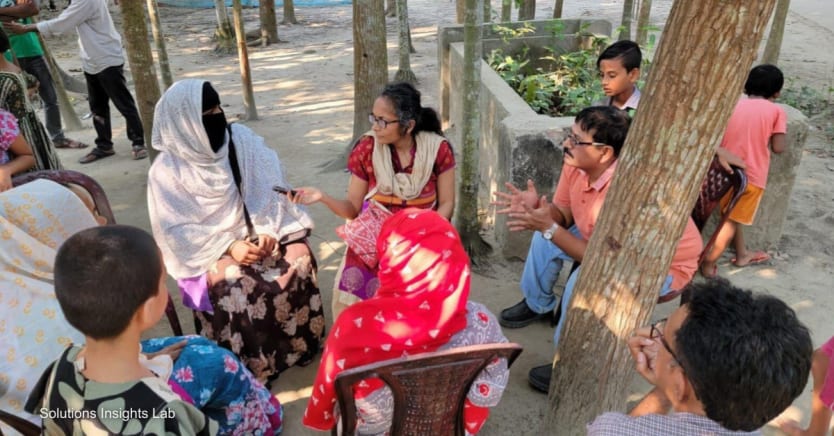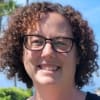
Let’s say you want to improve the livelihoods and well-being of people over 40 years old, and all the research points to a simple pair of reading glasses. But getting reading glasses to nearly a billion people isn't easy. It will require talking to governments, training community health workers and pharmacists, and working with the private sector to bring down manufacturing costs.
What if the situation was flipped and you wanted to build an ecosystem to address a complex social issue like eradicating childhood sexual violence? It will require legislation, shifting cultural norms, changing tech policies, and working with parents and families. What can we understand from past movements and ecosystems of the roles these stakeholders play to help with what we are trying to do?
We know and have learned from our work with the Skoll Foundation not just that organizations can’t solve social issues on their own, but they don’t. But to successfully collaborate, they need a bird's-eye view of the ecosystem or insights from other ecosystem players that are often less visible and communicated. Why? Because while each organization has its own communications department, website, and mission, ecosystems don’t. And historically, stakeholders just saying they play “only one role in an ecosystem” is not how they have landed philanthropic grants.
That’s changing. Systems change is a term the development community has grown fond of to signify the importance of people and organizations working together relationally on one issue over time. But the exact details of what and who constitutes a system — and how to evaluate it — continue to be a mystery to many funders and organizational leaders alike.
Mapping partnerships for effective systems change
We launched the Solutions Insights Lab in 2022 to make complex systems more accessible. We demystify the work of system analysis by interviewing interdependent stakeholders within a system and using those relationships to create a systems map, which we use to engage players and funders looking to deepen their investment in what’s working.
In partnership with the Skoll Foundation, we interviewed over 200 Skoll Foundation awardees and grantees from around the world. These interviews yielded valuable insights about what it takes to create effective and sustainable solutions. When we first looked at the work of VisionSpring, EYElliance, or Last Mile Health we could see that they shared some strategies in common. But their strengths, vision, and the connections in their work within the context of a system came into focus when we interviewed them about their role in distributing reading glasses in partnership with the Livelihood Impact Fund for the eyeglass initiatives project.
Creating collective vision: From reading glasses to ending childhood sexual violence
Jordan Kassalow, founder of VisionSpring, explained that building political will for governments to integrate the resourcing of community health workers into their health systems is something that VisionSpring and all of the major NGOs working with community health workers should be doing. And the others we spoke to offered examples of their role in that ecosystem.
Last Mile Health Chief Program Officer James Nardella spoke about the organization’s role as a technical assistant to the Liberian government, which allows them to advise on community health worker training through the National Community Health program. This relationship enabled them to formulate a key hypothesis that community health workers could fit reading glasses into their existing bundle of offerings. How did they test it? Through a partnership with EYElliance, which ran a pilot in one county of Liberia. EYElliance’s co-founder and CEO Elizabeth Smith credits partnerships such as those as integral to getting governments on board by including presbyopia screening and eyeglass distribution into preexisting national health systems. Abi Steinberg, executive director leading the eyeglasses portfolio at Livelihood Impact Fund, explained how testing distribution expansion to non-eye health players has yielded success as they’ve shown they can reach more people by bundling it with existing services.

Mapping out the reading glasses ecosystem identified key partnerships and pathways for scaling that form the basis of effective systems change work.
A slightly different example of the importance of mapping out an ecosystem is the Solutions Insights Lab’s project with To Zero, an initiative funded by the Oak Foundation to eradicate childhood sexual violence, or CSV. To Zero is a unique time-bound collaboration designed to create a shared global vision and an evidence-based road map that its more than 330 stakeholders can use to end CSV quicker. The project will release a visioning report based on inputs from the field on Nov. 18, the World Day for the Prevention of and Healing from Child Sexual Exploitation, Abuse, and Violence.
To map out the system in such a complex context, the Solutions Insights Lab didn’t just investigate the system within the CSV sector. We looked at other systems with movement building successes to draw from. Unlike the reading glasses ecosystem, which is in close conversation and, oftentimes, direct partnership with one another, the ecosystem showed that ending CSV requires various players to focus on their areas of expertise rather than duplicating efforts.
Kathy Crosby, CEO of the anti-tobacco advocacy organization Truth Initiative, summed it up: “If you can find a way to build coalitions so that your resources are all aligned towards solving the problem, but you're independently doing different things with your money, your time, and your people, then you can chip away at a bigger problem. ... You're thinking about the ecosystem and everybody collectively is working together, but you're also independent.”
Key roles in an ecosystem
There are several key roles in this ecosystem, one of which is focused on creating a survivor- and child-centered justice system. When we talked to leaders of justice-oriented organizations, we saw that they are actively bringing attention to the survivor’s experience in order to create mechanisms that incorporate their needs and experiences. Professional tools, training, and best practices all need to be better informed about CSV, and this work is best done by organizations focused on this area.
If your goal is to prevent further harm, galvanizing political will is another important ecosystem role because laws and regulations are needed. Piyush Tewari, founder and CEO of SaveLIFE Foundation, talked about the importance of pressuring the government to pass India’s Good Samaritan law, which provides bystanders with legal protections to encourage them to help in emergencies and, eventually, testify and hold perpetrators accountable. Long-term interventions around prevention can be less politically palatable than funding law enforcement, so pushing governments to action and holding them accountable is a big piece of the work.
Media stakeholders play another important role in this ecosystem, spreading messages, normalizing conversations, and pressuring accountability. Mike Davis, CEO of Global Witness, shared how his organization uses international and local media — sometimes controversially — to call out bad players among major oil, gas, and energy companies. Using the court of public opinion as a way to hold them accountable for their environmental abuses has proved a strategic and effective tool.
Ecosystem maps are based on relationships. Sometimes those relationships involve players actively collaborating and sharing insights within a single system and a shared, well-defined mission, like those working to distribute reading glasses for the benefit of hundreds of millions of people. On the other hand, sometimes the relationships within an ecosystem are broader and more complex, involving hundreds of individuals and organizations working together to end childhood sexual violence. In both cases though, we can map interdependent players within a system and pull out the key variables, factors, and actions, which provides a collective vision that enables us to intervene more effectively and create sustainable solutions.
Learn more about the Solutions Insights Lab’s projects: What’s Working Solutions, Eyeglass Initiatives, and Solutions for Ending Childhood Sexual Violence.
Authors’ note: This work is not journalism. The views and opinions expressed by interviewees in this article are their own and do not necessarily reflect the views of the project partners and funders.







